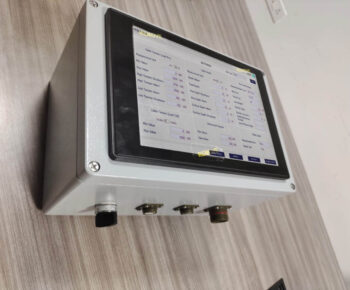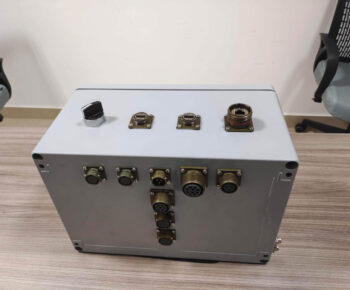Customer: A leading O&G Equipment Manufacturer, United Arab Emirates
Background:
The oil and gas industry heavily relies on the use of wireline equipment to obtain valuable downhole data for efficient drilling and production operations. The primary application of wireline equipment in oilfields is for well logging, which involves lowering sensors and instruments into a wellbore to gather data on the geology and properties of the formation of the rock layers. This data is essential for operators to make informed decisions about drilling and production operations.
Our client, an Oil and Gas Equipment Manufacturing company, wanted us to develop a custom wireline equipment monitoring system to improve the quality and accuracy of their slickline and e-line operations. Additionally, the client requested the ability to raise alarms, execute necessary control functions with real time visualization both locally and remotely from a central station.
Engagement Model:
The overall project was completed over a Fixed Price Model including a Knowledge Transfer exercise based on a firm requirements specifications document with a clearly defined scope and agreed timeframe.
Design and Engineering:
By conducting a thorough analysis of the client’s specifications and requirements and considering the extreme conditions of the operating environment, an optimal solution was proposed which shall be housed in an explosion proof DAQ panel, custom designed to acquire data from highly accurate instrument to sense the slightest variations in parameters like tension and torque. The system was carefully crafted to ensure complete capture of all critical parameters (including cable tension, depth, speed etc.) from the moment of sensor line penetration into oil well to the moment it was retrieved.
The requirement for real-time data visualization and logging both locally as well as at a remote station played a crucial role in the design of the product. After carefully evaluating options, hardware with inbuilt controller, communication and visualization capabilities was chosen to optimize size and cost.
This allowed for seamless data transfer and enhanced remote monitoring capabilities, ultimately providing our client with greater operational efficiency and improved decision-making capabilities. Upon stopping the process, our solution provided for seamless and complete data transfer in the form of a Log ASCII standard (LAS) file format, a standard file format common in the oil-and-gas and water well industries to store well log information, enabling our client to easily perform further analytics.
To ensure overall safety and easy operation from customer centric locations, we also included additional control measures such as emergency shutdown and manual override, ensuring that the system could be easily operated and maintained by our client. Alarms to notify operators of potential issues or abnormalities such as wireline tension and maximum depth of sensor reach were included.
Software Technologies / Protocols Used: Java Script, LAS, MQTT, IEC 61131-3 (LD)
Field Testing:
Once the system was designed and manufactured, we conducted a series of tests to certify that it met the client’s specifications and requirements. The system was tested under various operating conditions and integration with sensors after which it was verified that it could withstand the harsh environment.
A knowledge transfer session was conducted at client site to instruct operators on how to use the system effectively. A comprehensive manual detailing the system’s operation and maintenance procedures was also provided.
Conclusion:
Our team of product designers and engineers successfully designed and developed a system that met the client’s specifications and requirements while ensuring that the operators could utilize the system to its fullest potential and achieve optimal results. The Explosion proof DAQ panel was designed with high degrees of accuracy and precision, thoroughly capable of collecting and transferring sensitive data from the wireline sensors all the way up to the cloud Platform for monitoring and analysis.
Future:
Contract Manufacturing of the product to be taken up by CONSYST to cater to an estimated requirement of 25-30 systems per year.


